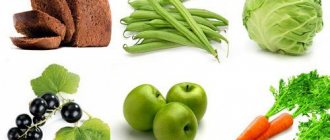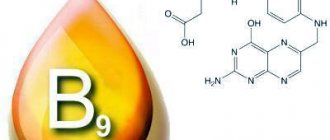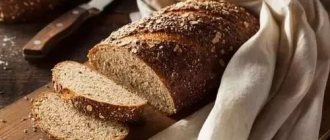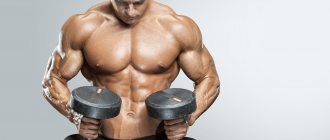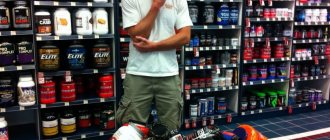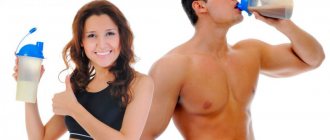Sometimes protein supplements, which are expensive and do not replace a nutritious diet, cannot be purchased for various reasons; in addition, some people are lactose intolerant, and vegetable and cheap cocktails are only absorbed by 50% and do not have a full complex of amino acids. Is it possible to gain weight or lose weight without the help of sports nutrition? Can. The main thing is to create the right diet of protein-rich foods in the required quantities.
What products can replace protein?
Protein powder is filtered and industrially dried protein molecules that are obtained from animal and plant products. Here we will consider only animal proteins, since the degree of their absorption is much higher than that of plant proteins. This is the most complete protein, both in amino acid composition and in quality and degree of absorption. This protein is obtained from: milk, eggs, meat. Accordingly, it is important to study the protein composition of these products and include them in the daily menu.
Foods containing high amounts of protein per 100 grams include:
- Chicken eggs (two whole eggs – 12 g).
- Quail eggs (a dozen contain about 12 g).
- Poultry meat (chickens - 20 g, turkey - 21 g, geese and ducks - 16.4 g).
- Animal meat (veal – 20 g, beef – 19 g, rabbit – 20.5 g).
- Fish and seafood (tuna – 24.5 g, pink salmon – 20.5 g, salmon – 20 g, chum salmon – 19 g, pollock and hake – 16 g, shrimp – 20.5 g, squid – 18 g, cod – 17 g, mussels – 11 g, octopus – 18.5 g).
- Milk (about 3 g depending on fat content).
- Low-fat cottage cheese (20-22 g).
- Cheese (19-25 g).
Considering the amount of protein, do not forget about the fat content in the product, especially if the goal is to lose weight.
For example, legumes, lentils, soybeans and nuts contain large amounts of protein, but at the same time, there are many times more fat and carbohydrates present here. Soy contains as much as 34 g of protein per 100 grams, but half of the substances are not digestible, and the composition of amino acids is very poor.
Give preference to lean meat, eggs, lean fish and cottage cheese.
By the way, eggs are digested faster than all products and almost completely, and the amino acid profile is richer in comparison with others. By throwing away the yolks to reduce fat, half the protein composition is lost.
Match foods in your diet to suit your fitness goals.
- Choose low-fat foods.
- Steam, bake or boil, but do not fry in oil, this will significantly increase the amount of fat.
- It is better to boil eggs, firstly, adding raw eggs to cocktails threatens salmonella infection, and secondly, they are less digestible and limit the access of biotin into cells (vitamin B7), which is responsible for the synthesis of glucose, fatty acids and amino acids.
A fit athletic form, whether during the period of muscle gain or weight loss, is quite achievable with the help of timely consumption of high-quality low-fat foods: eggs, meat, dairy and seafood.
The difference between regular food and protein shakes
Protein shakes are a protein concentrate in dry form, which is diluted with water or other liquid and becomes suitable for consumption. The protein shake may also contain other components; this can be found in the product description.
Using protein shakes as protein meal replacements has a number of advantages:
- the ability to quickly get a large portion of protein after training without overloading the stomach;
- there is no need to dramatically change your diet;
- Possibility of use for weight loss;
- improvement of protein metabolism in the body, including the production of blood cells;
- increased testosterone production in men.
However, this benefit is only relevant if cocktails are used correctly and do not contain harmful additives such as sweeteners, flavors and others.
Using cocktails can also be harmful:
- excess protein puts stress on the liver and kidneys, undermining their health;
- if there is excess, excessive weight gain is possible;
- a high concentration of protein can lead to flatulence, constipation or diarrhea;
- an allergic reaction to substances included in the cocktail is possible.
The principle of measure is important here. Before you start drinking a cocktail or its analogue, you need to familiarize yourself with its composition and choose one with a minimum of additives, especially artificial ones. It should be consumed within normal limits, without abuse. And at the first sign of an allergy, stop immediately.
How to replace protein after a workout
With such a wide variety of protein-rich foods to choose from, there are several manufactured items that are absorbed faster, making it possible to make a protein-like substitute.
After training , it is important that not only amino acids (proteins) are supplied, but also carbohydrates to restore energy reserves. And in the case of gaining muscle mass, when carbohydrates are supplied, insulin is produced - an anabolic hormone. Dairy products have exactly these qualities , their huge advantage is the high content of protein, both quickly digestible and long-digesting (casein), and also a low content of carbohydrates (milk sugar - lactose).
It’s very easy to prepare such a cocktail, there’s just one inconvenience – preparing it after a workout. Of course, it’s easier to stir the powder in milk, but there are many more ingredients. Moreover, this drink cannot be stored for a long time in a closed form and in a warm room. It is advisable to consume after preparation.
- Take 200-300 ml of low-fat milk, add 100 grams of low-fat cottage cheese (no more than 5%).
- Add ready-made egg whites, and if the goal is not weight loss, add 2 eggs with yolks.
- Beat the mixture in a blender.
- To improve the taste, you can add honey, sweetener, berries, fruits, but this will significantly increase the carbohydrate content.
Read more about protein shakes for muscle growth →
Reasons for giving up protein
Despite the obvious benefits of taking a protein supplement, there are times when taking protein powder is not an option.
Among the main reasons for refusing a sports supplement are:
- Financial difficulties
- Allergic reactions to components (for example, intolerance to milk sugar - lactose)
- A firm position on the issue of eating only natural products
In such a situation, against the backdrop of intense strength training, the question arises of what to replace protein with. And if for beginners with a small body weight it is easily solved with the help of natural products, then for more advanced bodybuilders weighing 90 kg and above this becomes a problem.
To reach the daily protein requirement (for example, 200 grams), athletes with large body weight will have to eat large amounts of food, including natural protein.
It is difficult to cope with such portions, so the strategy for replacing protein supplements is carefully thought out.
Types of sports nutrition instead of protein
Protein is the main source of amino acids, both essential and essential. The goal of drinking a protein shake is to get all the amino acids for further muscle recovery and growth. There are different types of protein that differ in the duration of release of amino acids. Some of them are absorbed in 20–30 minutes, this is especially necessary immediately after completing exercise or after sleep. Others, on the contrary, begin to be partially absorbed after one hour, up to 8-12 hours.
It is advisable to replace protein with full cycle amino acids and BCAAs. These are pure amino acids in capsules or powder, which are quickly absorbed, prevent catabolism and promote rapid muscle recovery. The protein composition of these complexes will be no less effective, but will not replace a full meal, as a protein shake does. The powder form of amino acids can be diluted with water, and the capsules, accordingly, can be washed down with it. But amino acids will be cheaper than protein and better if there is a need to remove subcutaneous fat without losing muscle mass on a low-carb diet.
Foods that can replace protein during muscle gain
Protein is one of the most common proteins. It is found in large quantities in muscles, skin, hair and nails.
Traditionally, a person gets protein from food, eating meat, dairy products, fish and vegetables. However, for an athlete whose muscles are under very heavy loads, the usual portion of protein is not enough; he needs to supplement his diet. You can do this in two ways:
- through the preparation of a special diet with a high protein content;
- taking supplements such as protein shakes and others.
Both methods have their advantages and disadvantages, and you need to choose which one is better based on the characteristics of the body. We will highlight the most protein-rich foods, the use of which will enhance nutrition.
| Product | Protein content per 100 g. |
| Hard cheeses | 30 |
| Pork | 26 |
| Tuna | 25 |
| Octopus | 25 |
| Chicken, turkey | 24 |
| Halibut | 23 |
| Beef | 23 |
| Sardines | 21 |
| Cottage cheese | 20 |
| Beans | 20 |
| Lentils | 13 |
| Tofu | 12 |
| Yogurt | 10 |
| Milk | 8 |
| Green pea | 7 |
| Eggs | 6 |
| Nuts | 6 |
| Broccoli | 6 |
By adding more lean meat and fish to your food, you can increase the protein content in it, however, this may cause problems with a lack of other substances, such as B vitamins, found mainly in cereals. Therefore, the menu should be based on a rational basis, taking into account all the needs of the body.
High Protein Natural Foods Chart
For the convenience of planning a daily diet based on natural products, we provide the approximate protein content in various ready-made dishes and products (the full table of nutritional value of products can be found here).
A detailed description of the benefits of individual product groups is provided below.
| LIST OF NATURAL PROTEIN PRODUCTS THAT CAN REPLACE PROTEIN AT HOME | ||||||||
| DAIRY PRODUCTS AND EGGS | ||||||||
| Product | Measure | Gram | Calories | Protein | Carbohydrates | Cellulose | Fat | Saturated fat |
| Cow's milk, whole | 1 l | 1034 | 700 | 34 | 50.9 | 0 | 42.4 | 38.16 |
| Cow's milk, skimmed | 1 l | 1043 | 381.6 | 38 | 55.1 | 0 | 0 | 0 |
| Buttermilk | 1 cup | 246 | 127 | 9 | 13 | 0 | 5 | 4 |
| Powdered milk, whole | 1 cup | 103 | 515 | 27 | 39 | 0 | 28 | 24 |
| Goat milk, fresh | 1 cup | 244 | 165 | 8 | 11 | 0 | 10 | 8 |
| Cottage cheese, fatty | 1 cup | 225 | 240 | 30 | 6 | 0 | 11 | 10 |
| Cottage cheese, low fat | 1 cup | 225 | 195 | 38 | 6 | 0 | 0 | 0 |
| Swiss cheese | 28 g | 28 | 105 | 7 | 0 | 0 | 8 | 7 |
| Egg, boiled or raw | 2 pcs. | 100 | 150 | 12 | 0 | 0 | 12 | 10 |
| Scrambled (omelet) or fried eggs | 2 pcs. | 128 | 220 | 13 | 1 | 0 | 16 | 14 |
| Egg yolk | 2 pcs. | 34 | 120 | 6 | 0 | 0 | 10 | 8 |
| MEAT PRODUCTS | ||||||||
| Product | Measure | Gram | Calories | Protein | Carbohydrates | Cellulose | Fat | Saturated fat |
| Beef, lean | 1 serving | 85 | 185 | 24 | 0 | 0 | 10 | 9 |
| Chicken, baked | 1 serving | 85 | 185 | 23 | 0 | 0 | 9 | 7 |
| Lamb, minced | 1 serving | 115 | 480 | 24 | 0 | 0 | 35 | 33 |
| Pork, sliced | 1 serving | 100 | 260 | 16 | 0 | 0 | 21 | 18 |
| Pork sausage | 1 serving | 100 | 475 | 18 | 0 | 0 | 44 | 40 |
| Turkey roasted in the oven | 1 serving | 100 | 265 | 27 | 0 | 0 | 15 | 0 |
| Veal, cutlet, baked | 1 serving | 85 | 185 | 23 | 0 | 0 | 9 | 8 |
| FISH AND SEA PRODUCTS | ||||||||
| Product | Measure | Gram | Calories | Protein | Carbohydrates | Cellulose | Fat | Saturated fat |
| Cod, baked | 1 serving | 100 | 170 | 28 | 0 | 0 | 5 | 0 |
| Fish sticks, breaded | 5 pieces. | 112 | 200 | 19 | 8 | 0 | 10 | 5 |
| Flounder, baked | 1 serving | 100 | 200 | 30 | 0 | 0 | 8 | 0 |
| Haddock, fried | 1 serving | 85 | 135 | 16 | 6 | 0 | 5 | 4 |
| Halibut, baked | 1 serving | 100 | 182 | 26 | 0 | 0 | 8 | 0 |
| Herring, smoked | 1 small | 100 | 211 | 22 | 0 | 0 | 13 | 0 |
| Mackerel, canned | 1 serving | 85 | 155 | 18 | 0 | a | 9 | 0 |
| Salmon, canned | 1 serving | 85 | 120 | 17 | 0 | 0 | 5 | 1 |
| Sardines, canned | 1 serving | 85 | 180 | 22 | 0 | 0 | 9 | 4 |
| Tuna, canned, drained | 1 serving | 85 | 170 | 25 | 0 | 0 | 7 | 3 |
| VEGETABLES AND LEGUMES | ||||||||
| Product | Measure | Gram | Calories | Protein | Carbohydrates | Cellulose | Fat | Saturated fat |
| Asparagus, green | 6 pods | 96 | 18 | 1 | 3 | 0.5 | 0 | 0 |
| Dry cooked beans | 1 cup | 192 | 260 | 16 | 48 | 2 | 0 | 0 |
| Steamed broccoli | 1 cup | 150 | 45 | 5 | 8 | 1.9 | 0 | 0 |
| Steamed Brussels sprouts | 1 cup | 130 | 60 | 6 | 12 | 1.7 | 0 | 0 |
| Lentils | 1 cup | 200 | 212 | 15 | 38 | 2.4 | 0 | 0 |
| Peas, green, canned | 1 cup | 100 | 66 | 3 | 13 | 0.1 | 0 | 0 |
| Peas, green, frozen, warmed | 1 cup | 100 | 70 | 5 | 12 | 1.8 | 0 | 0 |
| Soya beans | 1 cup | 200 | 260 | 22 | 20 | 3.2 | 11 | 0 |
| BREAD, CEREALS AND GRAINS | ||||||||
| Product | Measure | Gram | Calories | Protein | Carbohydrates | Cellulose | Fat | Saturated fat |
| Wheat bread | 1 slice | 23 | 60 | 2 | 12 | 0.10 | 1 | 1 |
| Rye bread | 1 slice | 23 | 55 | 2 | 12 | 0.10 | 1 | 1 |
| White bread | 1 slice | 23 | 61.3 | 2 | 11.5 | 0.5 | 0.8 | 0.6 |
| Whole grain bread | 1 slice | 23 | 55 | 2 | 11 | 0.31 | 1 | 0 |
| Corn grits, hulled, cooked | 1 cup | 242 | 120 | 8 | 27 | 0.2 | 0 | 0 |
| Soy flour | 1 cup | 110 | 460 | 39 | 33 | 2.9 | 22 | 0 |
| Wheat flour | 1 cup | 110 | 400 | 12 | 84 | 0.3 | 1 | 0 |
| Pasta, cooked | 1 cup | 140 | 155 | 5 | 32 | 0.1 | 1 | 0 |
| Oatmeal | 1 cup | 236 | 150 | 5 | 26 | 4.6 | 3 | 2 |
| Pizza, 1/8 from 35 cm | 1 piece | 75 | 180 | 8 | 23 | t | 6 | 5 |
| Brown rice, uncooked | 1 cup | 208 | 748 | 15 | 154 | 1.2 | 3 | 0 |
| White rice | 1 cup | 191 | 692 | 14 | 150 | 0.3 | 0 | 0 |
| Wheat germ | 1 cup | 68 | 245 | 17 | 34 | 2.50 | 7 | 3 |
| NUTS AND SEEDS | ||||||||
| Product | Measure | Gram | Calories | Protein | Carbohydrates | Cellulose | Fat | Saturated fat |
| Almonds, dried | 1/2 cup | 70 | 425 | 13 | 13 | 1.8 | 38 | 28 |
| Almonds, roasted and salted | 1/2 cup | 70 | 439 | 13 | 13 | 1.8 | 40 | 31 |
| Brazilian nut | 1/2 cup | 70 | 457 | 10 | 7 | 2 | 47 | 31 |
| Cashew | 1/2 cup | 70 | 392 | 12 | 20 | 0.9 | 32 | 28 |
| Coconut flakes, sweetened | 1/2 cup | 50 | 274 | 1 | 26 | 2 | 20 | 19 |
| Peanut butter | 1/3 cup | 50 | 300 | 12 | 9 | 0.9 | 25 | 17 |
| Peanuts, roasted | 1/3 cup | 50 | 290 | 13 | 9 | 1.2 | 25 | 16 |
| Sesame seeds, dried | 1/2 cup | 50 | 280 | 9 | 10 | 3.1 | 24 | 13 |
| Sunflower seeds | 1/2 cup | 50 | 280 | 12 | 10 | 1.9 | 26 | 7 |
| Walnut, raw | 1/2 cup | 50 | 325 | 7 | 8 | 1 | 32 | 7 |
Three popular protein shake formulations
All products must be whipped until smooth using a blender. One meal should contain 25-30 g of protein, however, this figure is selected taking into account individual characteristics, such as body weight.
- Cottage cheese – 100 g, glass of milk, banana, 1 tbsp. l. honey, 2 tbsp. l. oatmeal.
- One egg, a spoonful of honey, a glass of kefir, a handful of walnuts.
- 200 g cottage cheese, 5 egg whites, a spoonful of honey, banana, berries to taste (a handful).
When trying to make homemade protein, you need to adhere to the basic principles of nutrition for muscle development. Muscles can also develop with the help of a balanced diet, which includes commonly available foods, and not just sports protein.
And most importantly, do not forget about intense training. Without them, it is impossible to lose weight and develop good muscles.
Canned foods
17 Anchovies
Protein Amount: 28 g per 100 g serving
Typically brined and used as a relish (or topping for olives), this small fish is ideal as a canned protein replacement.
Because of its size, it does not accumulate toxins like most larger fish.
Anchovies are healthy because they contain omega-3 polyunsaturated fatty acids, which have a beneficial effect on cholesterol levels and heart health.
Advice:
To reduce the saltiness of anchovies, place them in water for 30 minutes and then drain.
18 Canned tuna
Protein Amount: 26 g per 100 g serving
Canned tuna is just as good a source of protein at home and on the go as raw tuna.
Advice:
To avoid extra calories from vegetable oils, choose canned foods made with water rather than oil.
19 Canned chicken meat
Protein Amount: 25 g per 100 g serving
Canned chicken is an excellent source of high-quality protein for sandwiches and salads.
It is important to know:
When purchasing meat, choose canned meat with minimal sodium content.
20 Canned sardines
Protein Amount: 25 g per 100 g serving
Canned sardines are often overlooked as not only are they an excellent source of protein, but they are also extremely rich in omega-3 fatty acids and vitamin D.
Research shows that vitamin D is necessary for the synthesis of testosterone in the body. Sardines are easily digestible by the body and contain large amounts of phosphorus, iodine, calcium, potassium, sodium, magnesium, zinc, and fluorine.
21 Canned beans
Amount of protein: 20 g per 1 glass
Beans are a fantastically cheap source of protein, and by far the best of all canned legumes. Beans are rich in amino acids, minerals and vitamins B1, B2, B4, B5, B6, as well as fiber.
Difference between animal and plant proteins
Some plant foods, such as tofu and legumes, also contain high amounts of protein. However, its quality is not enough. This is due to the type and amount of amino acids that are part of plant protein.
An animal is called complete because it contains a high percentage of essential amino acids that are not produced by our body. In plant foods there are much less of these elements, so giving up meat does not make it possible to get a sufficient amount of essential amino acids.
In addition, animal protein contains sufficient amounts of B vitamins, iron, zinc and fatty acids. At the same time, animal protein is higher in calories and is often accompanied by cholesterol and other saturated fats. It is often used with salt and other spices, which increases the negative effect on internal organs.
Another important point is the conditions for raising animals. Modern complexes use antibiotics, hormones and other substances to achieve greater productivity. All this accumulates in meat and is then consumed by humans.
Plants can also contain pesticides if they are not grown properly, but this is less common. At the same time, vegetable protein is lower in calories, and in products it is accompanied by fiber and many water-soluble vitamins.
Can I replace a protein shake with baby food?
Many novice athletes, trying to find alternative options to whey protein, pay attention to products such as powdered milk and infant formula. Essentially, any whey protein is milk powder that has been purified from fats and carbohydrates. Athletes are not advised to use such a product for sports purposes. Since the protein content in milk powder is significantly lower, and there is quite a lot of saturated fat.
Due to the high lactose content, such a product, if used regularly, can cause problems with the digestive system.
About protein supplements in sports nutrition >>
Other recommendations concern nutrition for babies and the answer to the question of whether protein can be replaced with baby food. The composition of special mixtures is radically different from powdered milk. They are not only thoroughly cleaned of impurities, but also enriched with vitamins and microelements. A significant disadvantage of this method of obtaining protein from baby food is the high cost of the product. In terms of the amount of protein obtained, the cost can be several times higher than the price of whey protein.
Experts advise that if you have a problem of intolerance to dairy products, look not at baby food, but at whey protein from plant raw materials in the form of soy or peas.
Protein Blends
What is this? These large plastic jars and buckets of white or multi-colored powder have practically become a symbol of sports nutrition. The actual protein in them is hydrolyzed protein, purified from unnecessary impurities and absorbed as quickly as possible. If the amino acid complexes described above are absorbed in 5 minutes, then the protein from the cocktail is absorbed in 15-20 minutes. Protein mixtures are divided into two main types, which are often confused - gainers, or protein-carbohydrate mixtures, with a high content of carbohydrates, and protein with minimal addition of carbohydrates (necessary only for the absorption of protein). Gainers are very high in calories: one serving contains up to 800-1300 kcal, which are absorbed by the body 100 percent. This kind of fattening, in the literal sense of the word, is required to gain muscle mass. Protein combined with 1.5-3 percent carbohydrates is suitable for both those losing weight and those simply training. In a sense, we even need it, since in ordinary food we frankly lack protein complete in amino acids. So 2-3 servings of a protein shake per week will help level out the imbalance. If, of course, your body tolerates it normally.
Can it be replaced? It is possible if you do not dream of the laurels of a bodybuilder and do not want to become an outstanding athlete. For the latter, unfortunately, the usual alternative to protein mixtures will not be suitable, since simple protein products, firstly, take a long time to digest (that is, you won’t go to training immediately after them), and secondly, they take a long time to be absorbed, that is, when gaining muscle mass not suitable for closing the carbohydrate window after exercise. So if you are interested in building muscles, then a massive attack with protein mixtures that are absorbed into the blood within 15-20 minutes is the only suitable option.
For those who are quite satisfied with the muscle relief, it is quite possible to use the old-fashioned methods. You will need milk, banana, cottage cheese, oatmeal, honey. This combination can be a great alternative to a gainer or a complete breakfast or afternoon snack. You can replace milk with juice, remove the banana and increase the amount of cottage cheese (so as not to overdo it on carbohydrates). A protein shake can replace milk (or kefir) when combined with cottage cheese and berries (fresh or frozen). Berries can be replaced with dried apricots or pears, and add honey for taste. Another option is juice (preferably without sugar, natural) and cottage cheese. Or vegetable juice and finely grated low-fat cheese. Or - before a long and tiring workout - broth from skinless chicken breast with the breast itself, ground in a blender with chopped herbs such as parsley, cilantro, basil. As you can see, professional athletes are nowhere without special sports nutrition. Ordinary fitness lovers can do without it, replacing it with tasty and healthy food.

